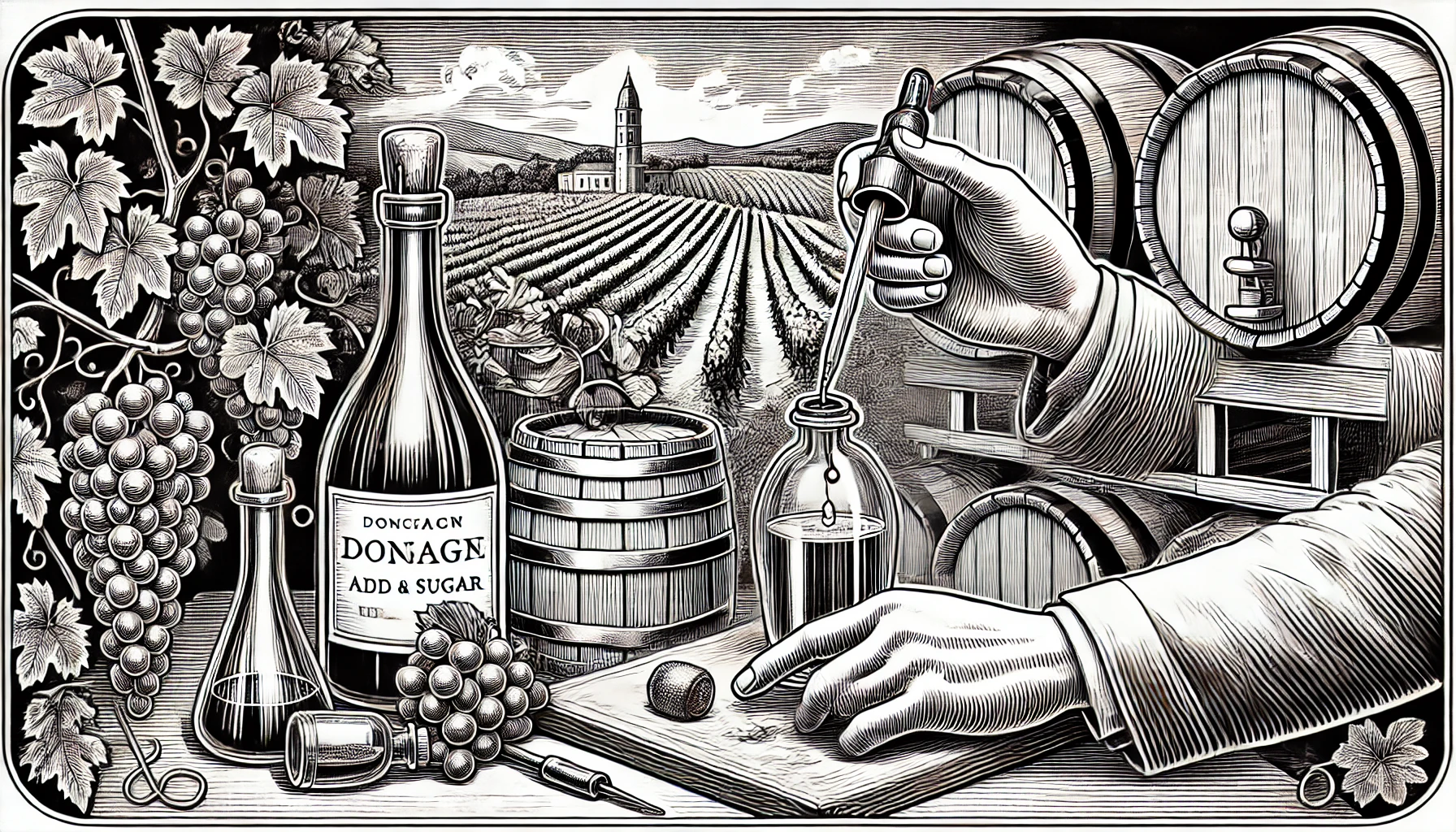
Dosage is a crucial step in the winemaking process for sparkling wines, particularly Champagne. After the second fermentation, which occurs in the bottle, the winemaker adds a mixture called “liqueur d’expédition.” This mixture is a combination of wine and sugar, and the amount added determines the final sweetness of the sparkling wine. The goal of dosage is to balance the wine’s natural acidity and tailor it to a specific sweetness level.
Sparkling Wines
In sparkling wines, the levels of dosage vary, and each category has a specific amount of sugar. The driest level is “Brut Nature” or “Zero Dosage,” where no sugar is added. This results in a very dry wine with high acidity. Next is “Extra Brut,” followed by “Brut,” the most common category, which has a minimal amount of sugar. Moving up the sweetness scale, we encounter “Extra Dry,” “Sec,” “Demi-Sec,” and finally “Doux,” which is the sweetest type of sparkling wine, with over 50 grams of sugar per liter.
Dosage plays a significant role in shaping the final character of the wine. Without it, the wine could taste overly acidic or unbalanced. By carefully controlling the amount of sugar added, winemakers ensure the sparkling wine appeals to different tastes, from those who prefer a bone-dry Champagne to those who enjoy a touch of sweetness in their bubbly. Dosage also helps in aging sparkling wines. Over time, the sugar interacts with the wine, developing complex flavors and a refined texture.
Choosing the right dosage is a blend of art and science. Winemakers must consider the natural characteristics of the wine, its acidity, and its overall structure before deciding how much sugar to add. Too much or too little can throw off the balance, making dosage one of the more nuanced elements of sparkling winemaking.
Curious about more wine terms and insights? Visit our Wine Wiki section and explore the basic wine terms for expert definitions and tips!